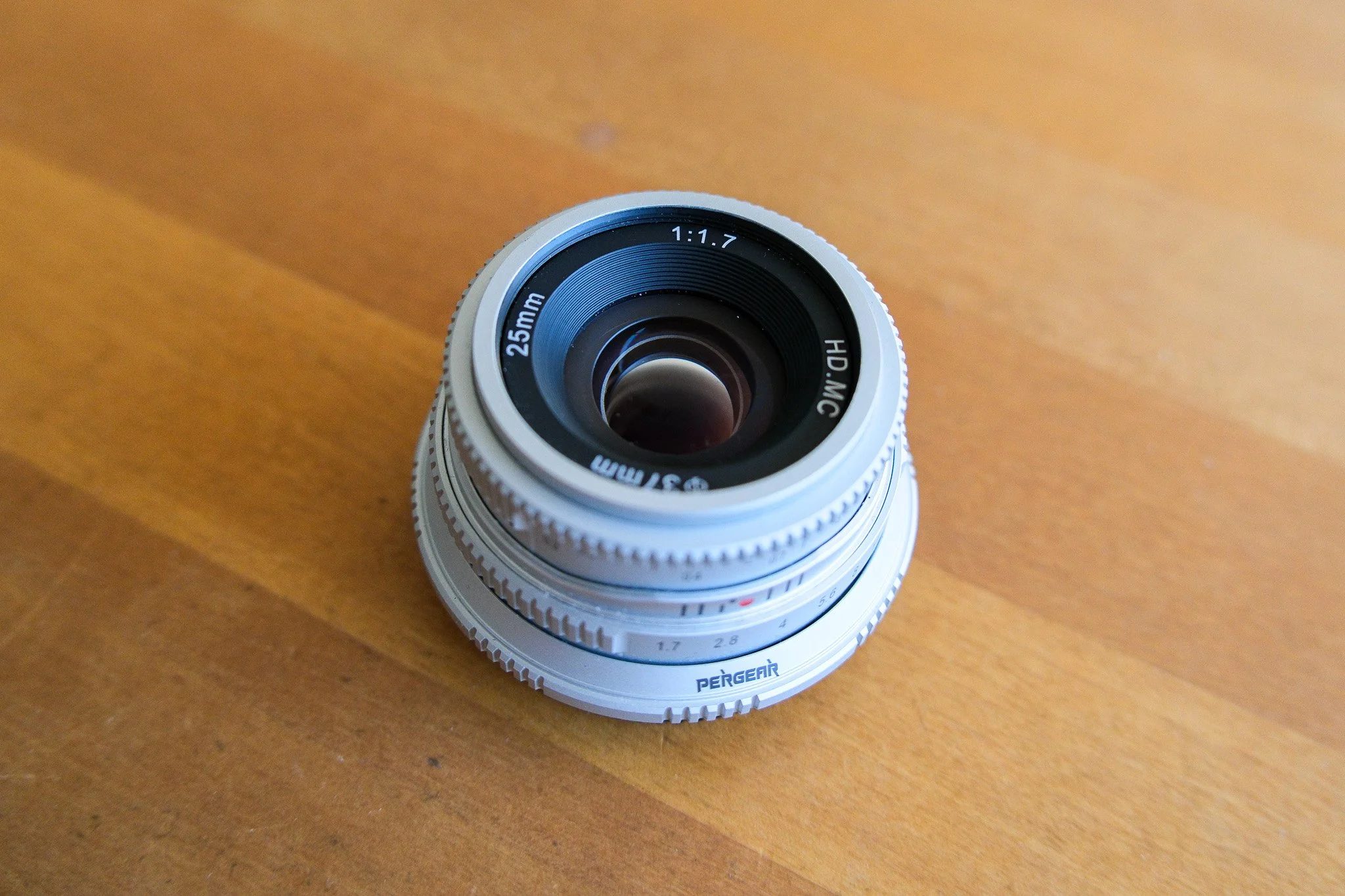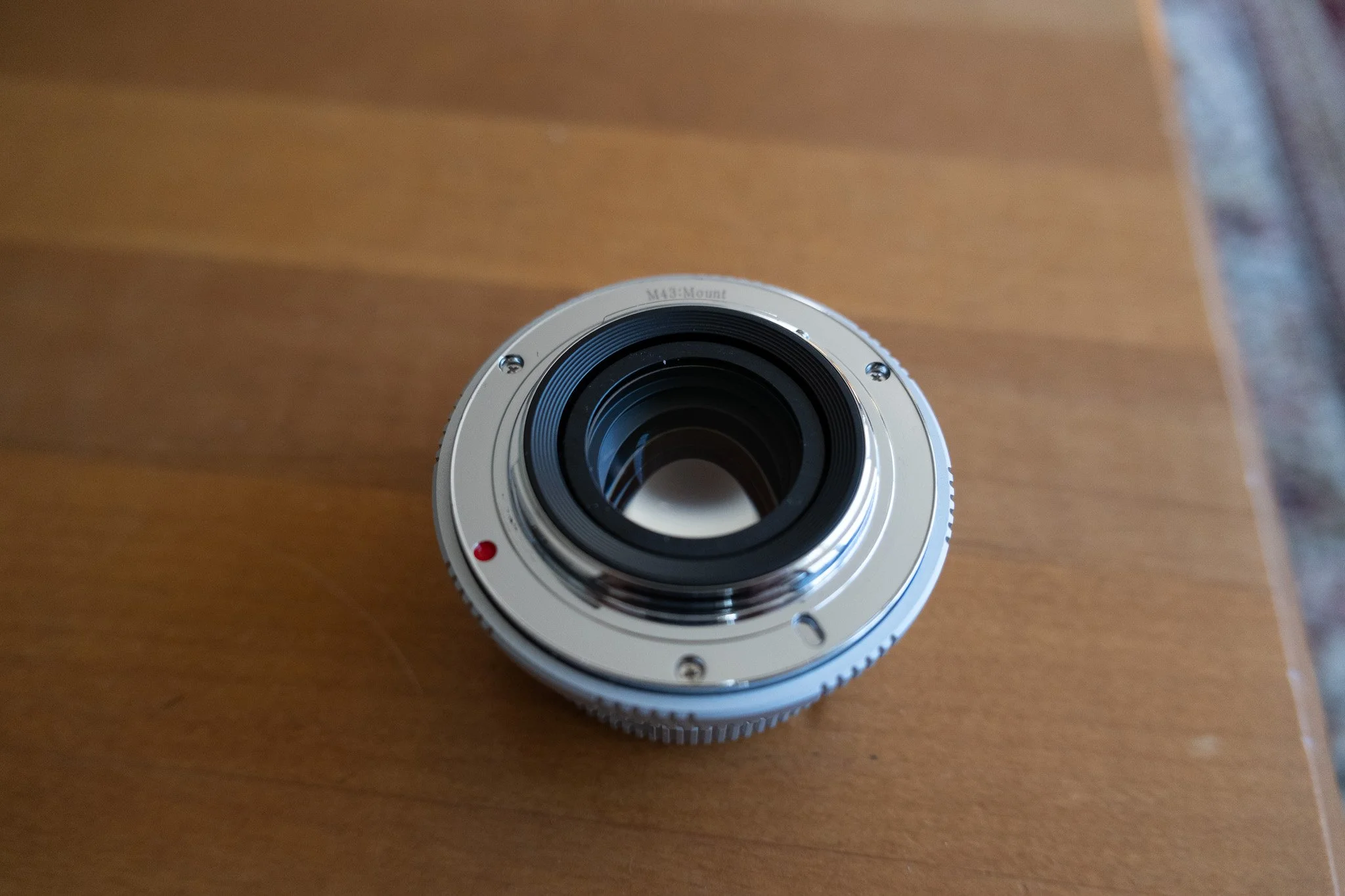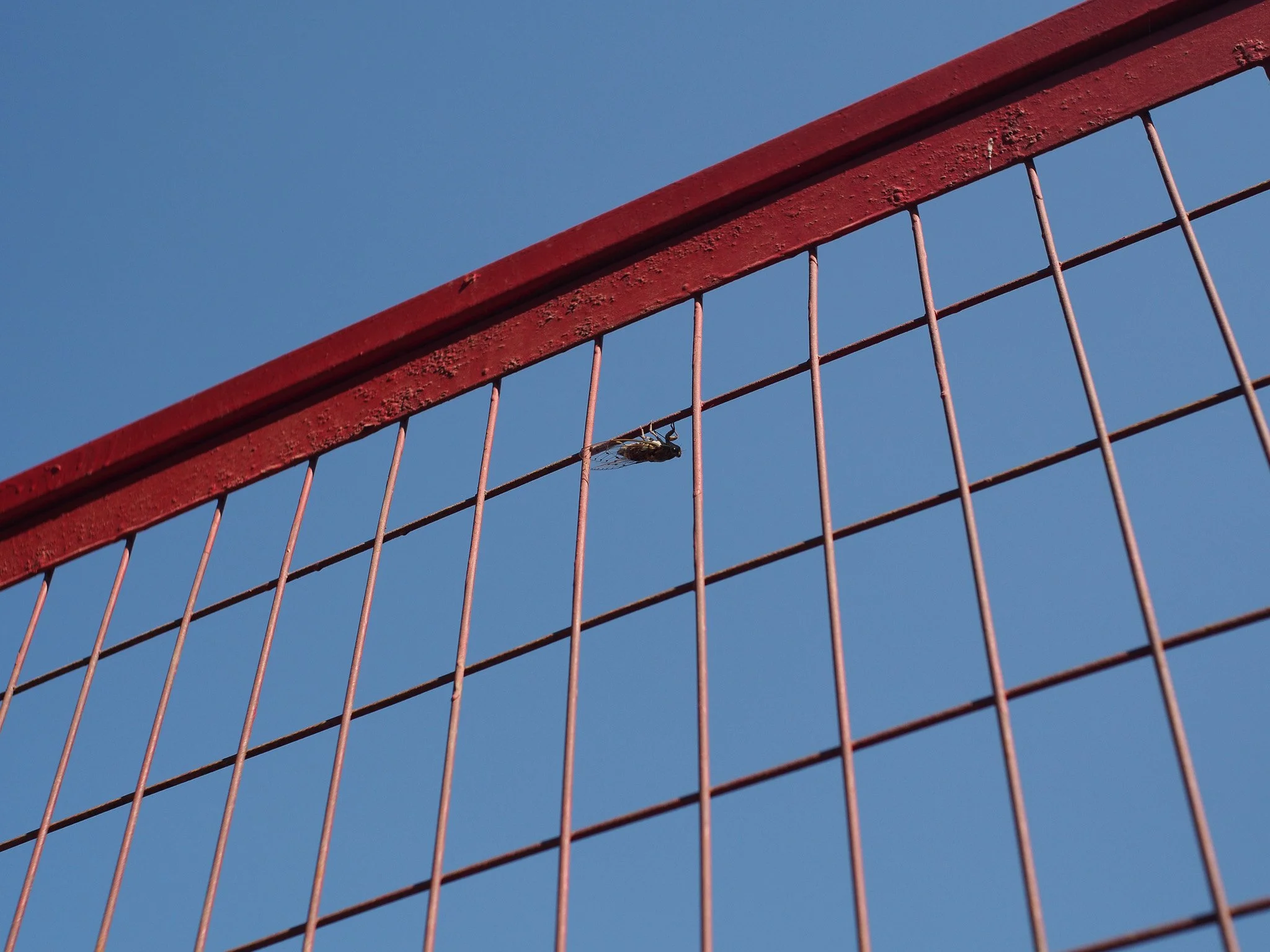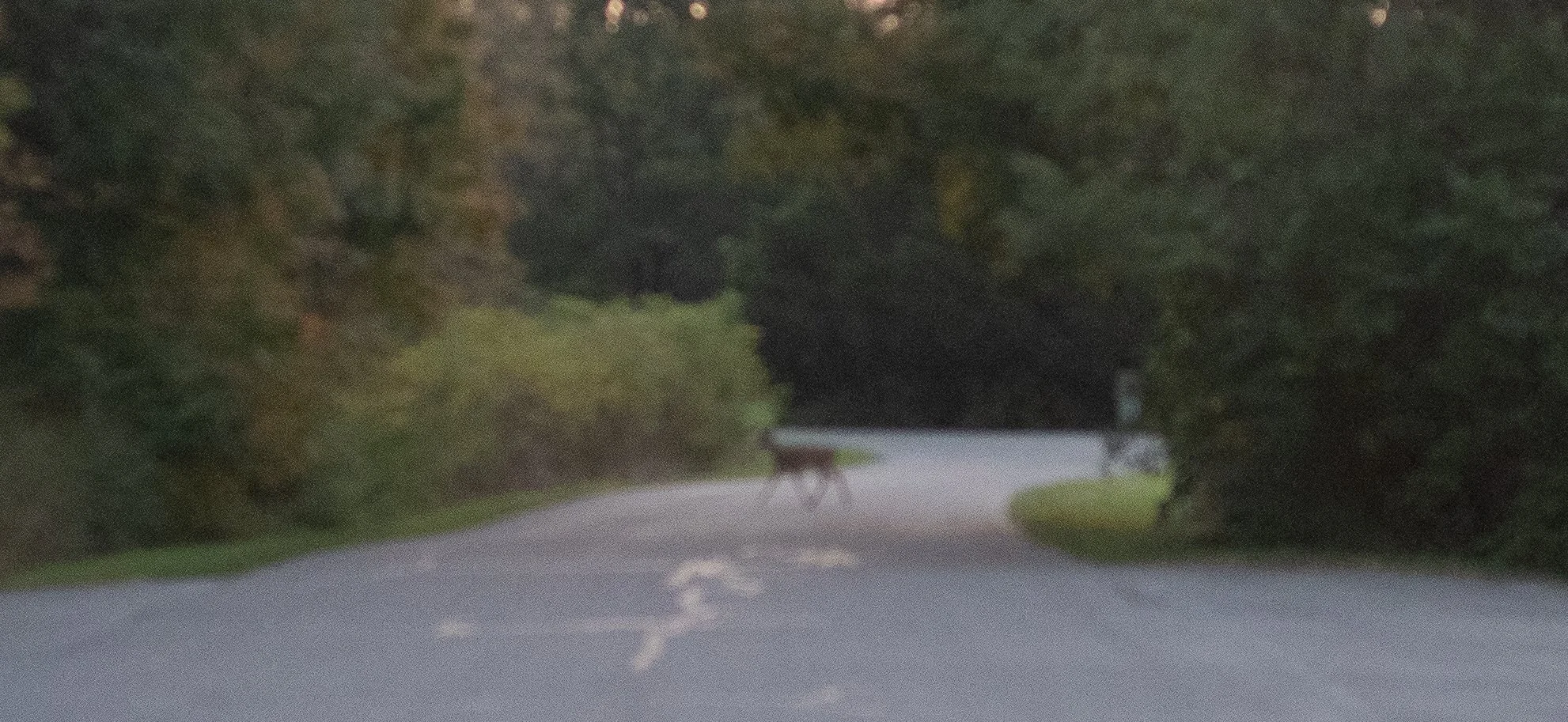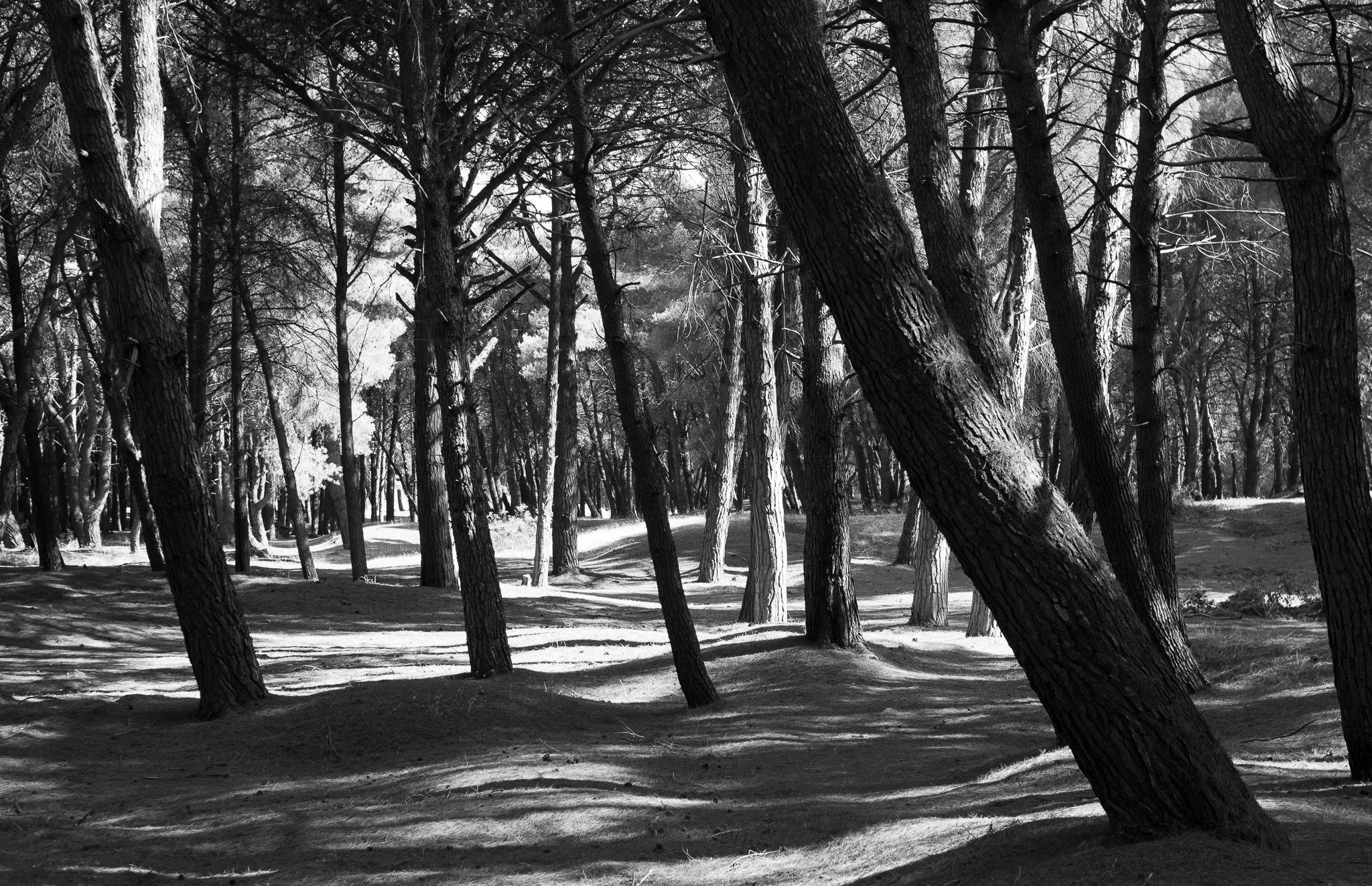Pergear 25mm f/1.7 Review (m4/3) - Worth It or Bust?
Thank You to Pergear for a New Micro 4/3 Lens
The first thing I want to do in this review is to give a hardy thank you to Pergear for continuing to make lenses for the micro four thirds system. At this point, almost all of the third party manufacturers have quit on micro four thirds, so I’m thankful Pergear is still giving Olympus and Panasonic some love.
Useful and Relevant Specs for the 25mm f/1.7:
This lens was originally designed for aps-c cameras.
When put on a micro 4/3 camera, the 25mm gives a 50mm full-frame equivalent field of view (2x crop factor).
Metal build
176 grams
Minimum focusing distance of about 8 inches.
Manual focus lens
37mm long
f1.7 maximum aperture
Available in x-mount, e-mount, rf-mount, and micro four thirds
A Practical and Simplified Review
It is my suspicion, I may be wrong, that those interested in purchasing this lens are not the same as the high-end manual focus snobs who buy Leica and Zeiss glass. I suspect most of you reading this review are looking for budget lenses, or are considering trying your first fully manual focus lens. It is to this supposed audience that I will be writing. This being the case, I’m going to write a simplified review, covering the highlights and skipping things like lens breathing and focus-shift, which are generally details only the snob class care about.
First Thing First - The Price
One of the main reasons people find this lens interesting is the price. It is available on Pergear’s website brand new for $69 USD.
My review will be written with this price in the forefront of my mind. I’m not going to be comparing it to a 5,000 dollar Leica Summilux.
Build Quality
The Pergear 25mm f/1.7 is made of metal and glass and has a nice weight of quality to it. The weight is not sufficient enough to ever be burdensome, but its enough to keep it from feeling like a cheap plastic lens. The aperture and focus rings turn smoothly. For $69, I give build quality a 9/10.
The only obvious flaw I noticed is that the Pergear logo is applied crookedly on my copy (see the title image of this review). The logo is not centered on the lens barrel. Its a little sloppy, but it has no effect on performance. Personally, I don’t care.
Image Quality, Sharpness, and Bokeh
For the price, I consider the sharpness to be very good. I’ve been surprised by the results when I bring photos into Lightroom. I have no complaints, even when shooting at the maximum aperture of f/1.7. As I’ve matured as a photographer, my desire for surgical sharpness has declined. This lens is more than sharp enough for anything I photograph.
Most of the sample images below were taken on my Olympus e-m5 mark i (the original). Even on an old camera, the lens did very well.
The two photographs above, and those below, illustrate the bokeh you can expect from the Pergear 25mm. At f/1.7, background separation is very possible, even with a micro four thirds sensor.
The bokeh can be a little busy, perhaps not the creamiest, but average at the least. Again, at $69 USD, I have no complaints. It is perfectly acceptable to my eye and has its own uniqueness.
The lens has nice contrast in most lighting conditions, which isn’t always the case with cheaper lenses.
Minimum Focus Distance - Better than Leica
If you’ve every shot with M-mount manual lenses, you’re probably familiar with the fact that they can’t focus very closely. Most M-mount lenses have a minimum focus distance of 0.4-0.5 meters.
The Pergear focuses down to 0.2 meters, which makes a huge difference when trying to get close to your subject.
I’m no macro photographer, but having the ability to focus close every once in a while is a huge benefit.
My Biggest Complaint about the Pergear 25mm f/1.7
Without question, my biggest gripe with the Pergear 25mm f/1.7 is that it focuses past infinity. When you slide the focus ring all the way to the left, to focus to infinity, the ring spins slightly too far, meaning objects at infinity are out of focus. In order to achieve infinity focus, you must slide the focus ring all the way to the left and then move it backwards a millimeter or two.
The very first photograph I ever took was a victim of this problem. I was out on an early morning walk when some deer crossed my path. Knowing I had limited time to take a photo, I racked the lens to infinity and took the shot. I was super disappointed when I got home and realize the photo was useless because the deer was totally out of focus.
I’ve experienced this issue on another budget manual focus lens that I owned (7artisans), so it isn’t unique to this Pergear. If you want to avoid this problem, you’ll need to step up to something like a Voigtlander lens.
Recommendation and Final Thoughts
I think this is a great lens for someone who is curious about manual focus, but doesn’t want to spend the big bucks to buy a Zeiss, Voigtlander, or Leica lens. It isn’t perfect, and its less refined than its more expensive counterparts, but at $69 I can absolutely recommend it for what it offers.


